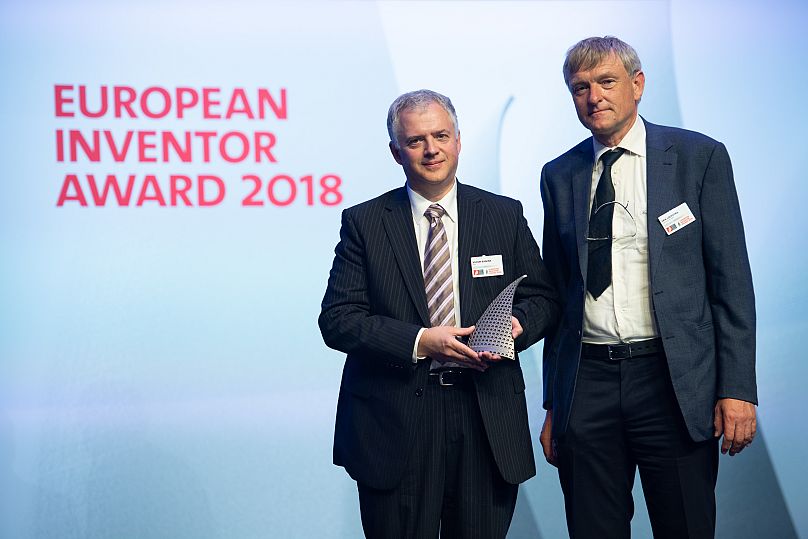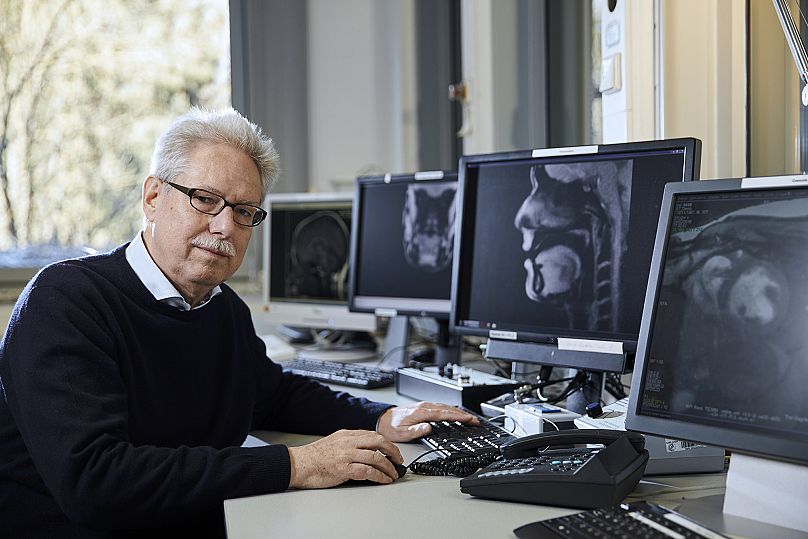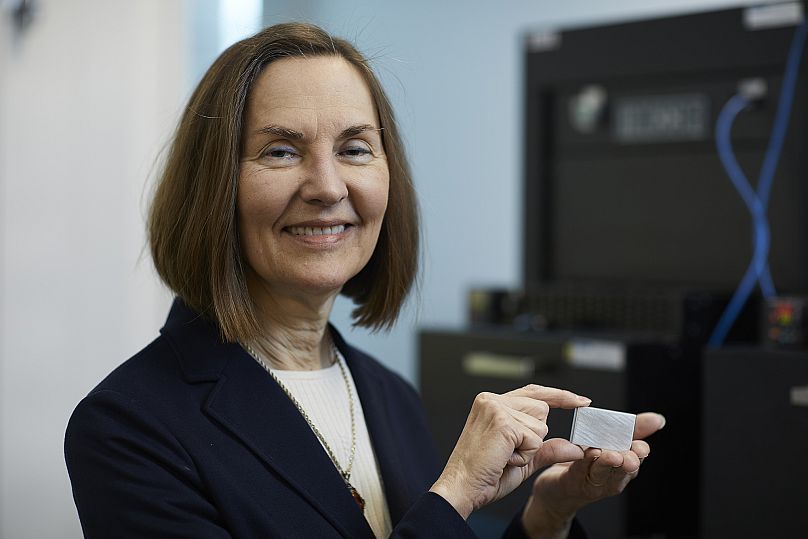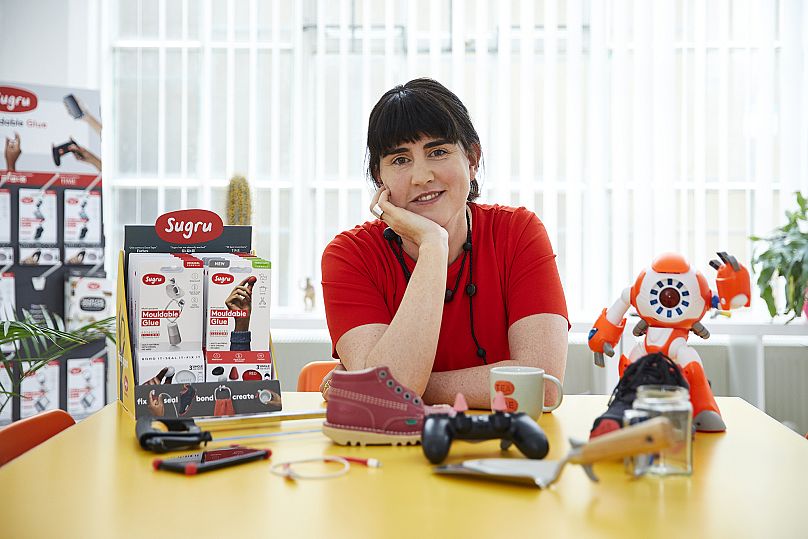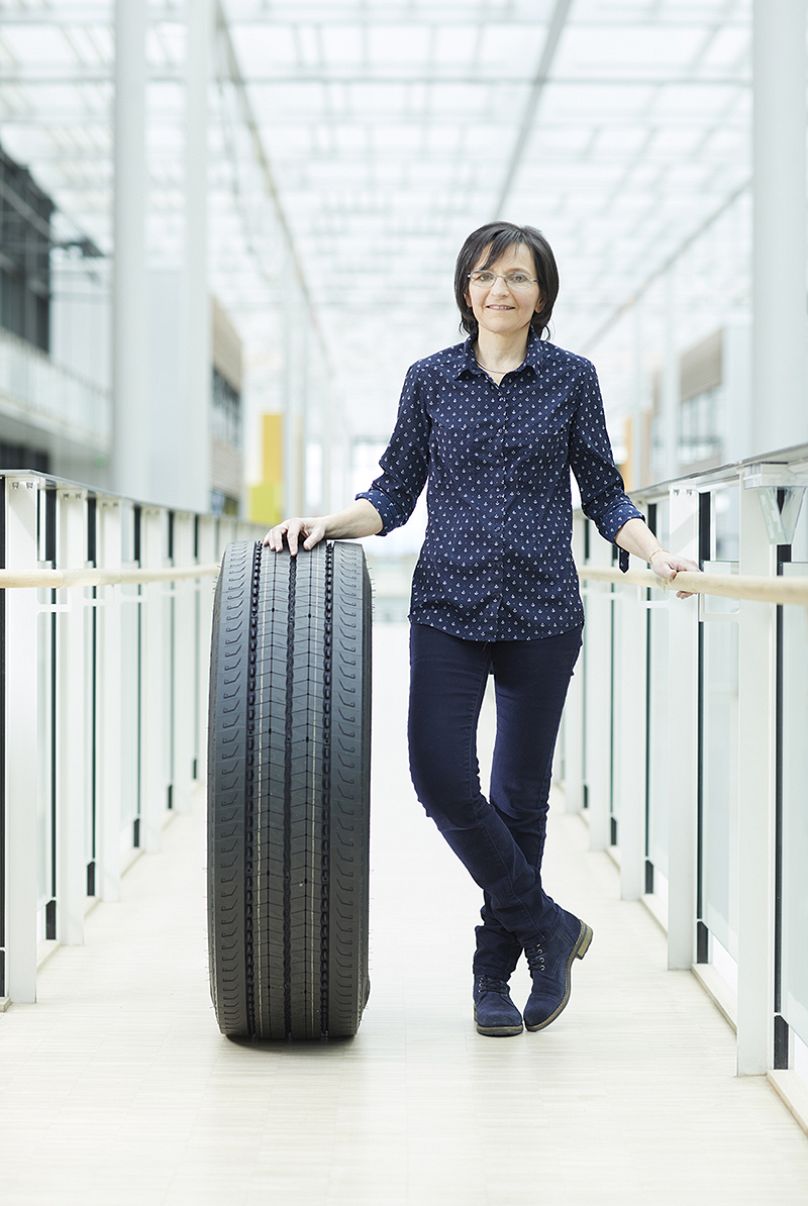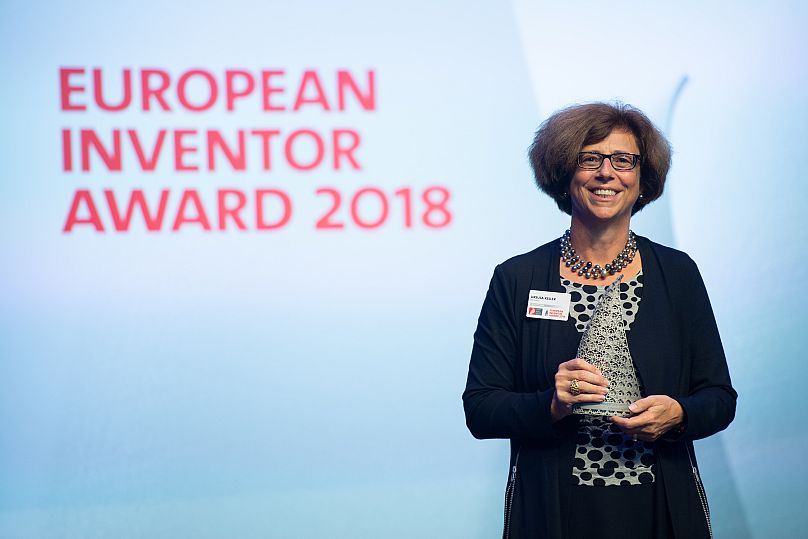The story of our modern world — from economic and social development to technological progress — can be plotted through groundbreaking ideas, born of brainstorming and protected by patents.
Some of the most significant inventions originated in Europe in the minds of scientists and engineers, and went on to have planet-wide impact.
Brilliant European minds have brought the world innovations like LCD screens, next-generation meningitis vaccines and the microchip.
The visionaries behind these advances may be operating in diverse fields, but have something in common: their work was recognised at the European Patent Office (EPO)’s annual European Inventor Award.
This year’s six prizes, presented on 7 June in Paris, Saint-Germain-en-Laye’s Théâtre Alexandre Dumas, offer a glimpse of promising developments and progress in a variety of technical fields affecting our everyday lives.
Big Data Impact on a Nanoscale
The microchips in our computers and smartphones are made by etching tiny patterns onto silicon wafers, currently using 193 nanometer wavelength lasers.
But to keep up with breakneck-speed tech advances, chips must become even smaller and more powerful, storing evermore data. This means pushing the limits of physics by drastically shrinking wavelength.
As such, Dutch engineer Erik Loopstra and Dutch-Russian physicist Vadim Banine, the winners, have developed a revolutionary new technology: a hyper-efficient method of guiding even more minuscule 13.5 nm UV light used in Extreme Ultra Violet Lithography.
Heading international teams of scientists and engineers at ASML and ZEISS, they crafted a system of ultra-smooth, multi-layer mirrors which focuses the laser light in the ‘printing’ process.
Still, even a nanoscopic dust particle landing on a chip during production could ruin it. So, inspired by the layers of steel in Samurai swords, the team also created a multi-sheathed super-thin membrane to protect the wafer from contaminants.
Their patented inventions are helping power the next generation of chips — used in autonomous vehicles and other cutting-edge areas.
The Father of the MRI
German biophysicist Jens Frahm, who received the Award in the “Research” category, has helped millions of patients by improving the speed of magnetic resonance imaging (MRI) from up to half a day to a few minutes in the 1980s, using his Fast Low Angle Shot (FLASH) method. It is the Max Planck Society’s most financially successful patent.
His follow-up patented technology upgrades the widely used FLASH MRI for the video era.
Imagine seeing moving joints or a beating heart, not just as static photographic images, but in live action, frame by moving frame.
Frahm’s even faster real-time FLASH 2 MRI is making this cutting-edge body scan a reality, and one that is poised to become the next industry standard.
But it is not only inventors who are paving new paths. This year’s EIA also boasts its own first: an unprecedented four winners of its six awards are women.
These include globally recognised US scientist and chemical engineer Dr Esther Sans Takeuchi, in the “Non-EPO countries” category.
The Power of Patents
Dr Sans Takeuchi crafted a battery small enough to energise an implantable cardiac defibrillator (ICD) at a necessarily high voltage, a million times more powerful than a pacemaker’s charge.
In contrast to its predecessor, it is long-lasting — five years versus 18 months — lessening the risks associated with frequent battery replacement surgeries.
Her novel solution was to combine lithium with silver vanadium oxide. To maximise and commercialise her R&D, she looked to the patenting process and took a strategic tact.
“We obtained patents to cover the technology that we developed and patents to cover other possible solutions to solve the problem,” says Dr Sans Takeuchi, who has been granted nearly 200 patents internationally.
Today, her life-saving batteries power most of the ICDs in this $5 billion US market.
This highlights how individuals, small groups and companies of all sizes can secure their innovation's place in the market by protecting their valuable intellectual property.
“It was very important that we protected our technology at the same standards that large corporations would,” said SMEs category prize-winner, Jane ní Dhulchaointigh of her and her team’s multi-purpose waterproof mouldable glue, Sugru. An EPO patent — which covers up to 44 countries — was key to raising funds as well.
Growing up on an Irish farm where broken items were often reconditioned rather than replaced, formed her vision of a ‘repair revolution’ — the antidote to forced obsolescence and consumer waste.
As a design student, ní Dhulchaointigh came up with Sugru by serendipity, while shaping a mix of silicon and sawdust into balls. She returned from lunch to find the substance hardened and bouncy.
“I’m not a chemist and I’m not a business person. I was a person with an idea,” she said humbly of her creation of what some call ‘the most exciting product since Sellotape.’ The enduring adhesive is now available in 175 countries.
Reinventing the Wheel
Positively changing the world doesn’t require reinventing the wheel.
But Industry category winners mathematician Agnès Poulbot and late truck tyre expert Jacques Barraud have done just that.
At Michelin in Ladoux, France, they developed an energy-efficient CO2 emission-reducing tyre tread that, through wear and tear, automatically regenerates itself.
The idea is simple yet ingenious. A new tyre’s single deep tread gets hotter and more misshapen as it rolls along. A half-worn one, which resists less, helps a vehicle reduce fuel consumption.
Re-envisioning a tyre with several shallower treads, they found they could add 20 percent to its life, cutting fuel expenditure by one litre per 100 km. Like an onion, each new tread layer is revealed, by and by, as tyres get worn down.
The patented technology, RegenionTM, could, according to the inventor, wipe out a month’s worth of Paris’ CO2 emissions in just a year if all Michelin PL tyres in Europe were equipped with the design, and is expected to make up 30 percent of the company’s heavy-duty tyre sales through 2022.
Lighting the Way
The European Inventor Award 2018 “Lifetime achievement” Award winner, Ursula Keller, trans-formed hot and destructive continuous laser light into more stable short-pulsed ultra-fast lasers that can safely be applied in areas ranging from eye surgery to auto manufacturing.
In 1992, the trailblazing Swiss physicist created the technology behind the pulsed lasers, a patented semiconductor saturable absorber mirror, while at world-acclaimed AT&T Bell Laboratories in New Jersey.
Soon after, at just 33, she became the first woman offered a university professorship in the natural sciences at the ETH Zürich.
Beyond the operating table or factory floor, her brainchild underpins our everyday communications. The iPhone wouldn’t exist without short-pulsed lasers.
Now she is taking her game-changing work to the next level, using a laser as a super-precise second hand of a clock which measures quantum mechanical time — revealing the once-invisible realms under our noses.
The remarkable advances of Keller and the other winners not only represent key plot points in modern history, but also light the way forward.
With the EPO seeing a record number of patents filed, the Munich-headquartered organisation’s free and public Espacenet database is an inventor’s treasure trove, containing information from more than 100 million patent documents from around the world. After all, each and every patent contains the seeds of future innovations.


